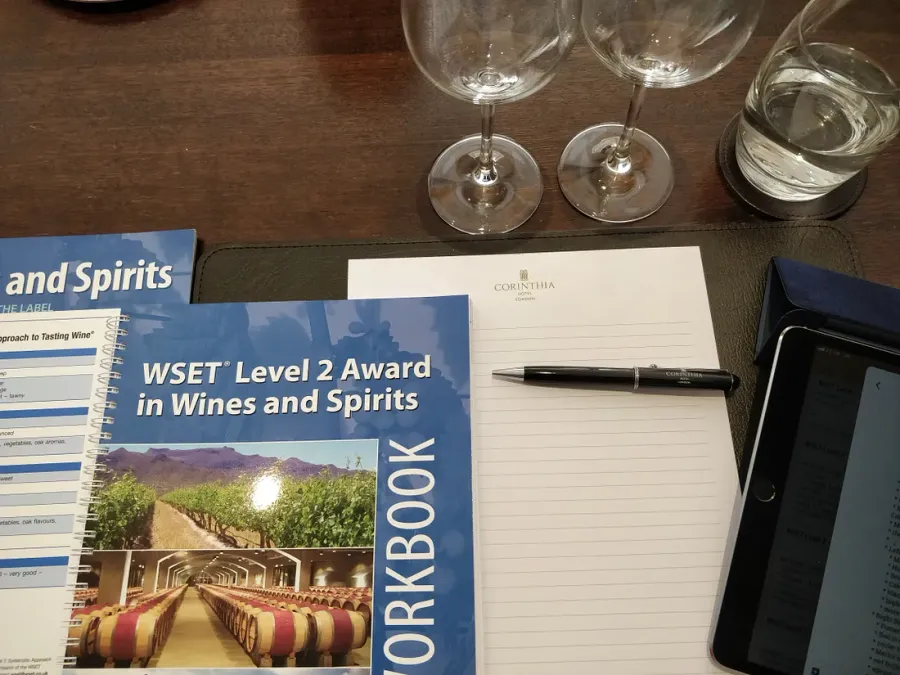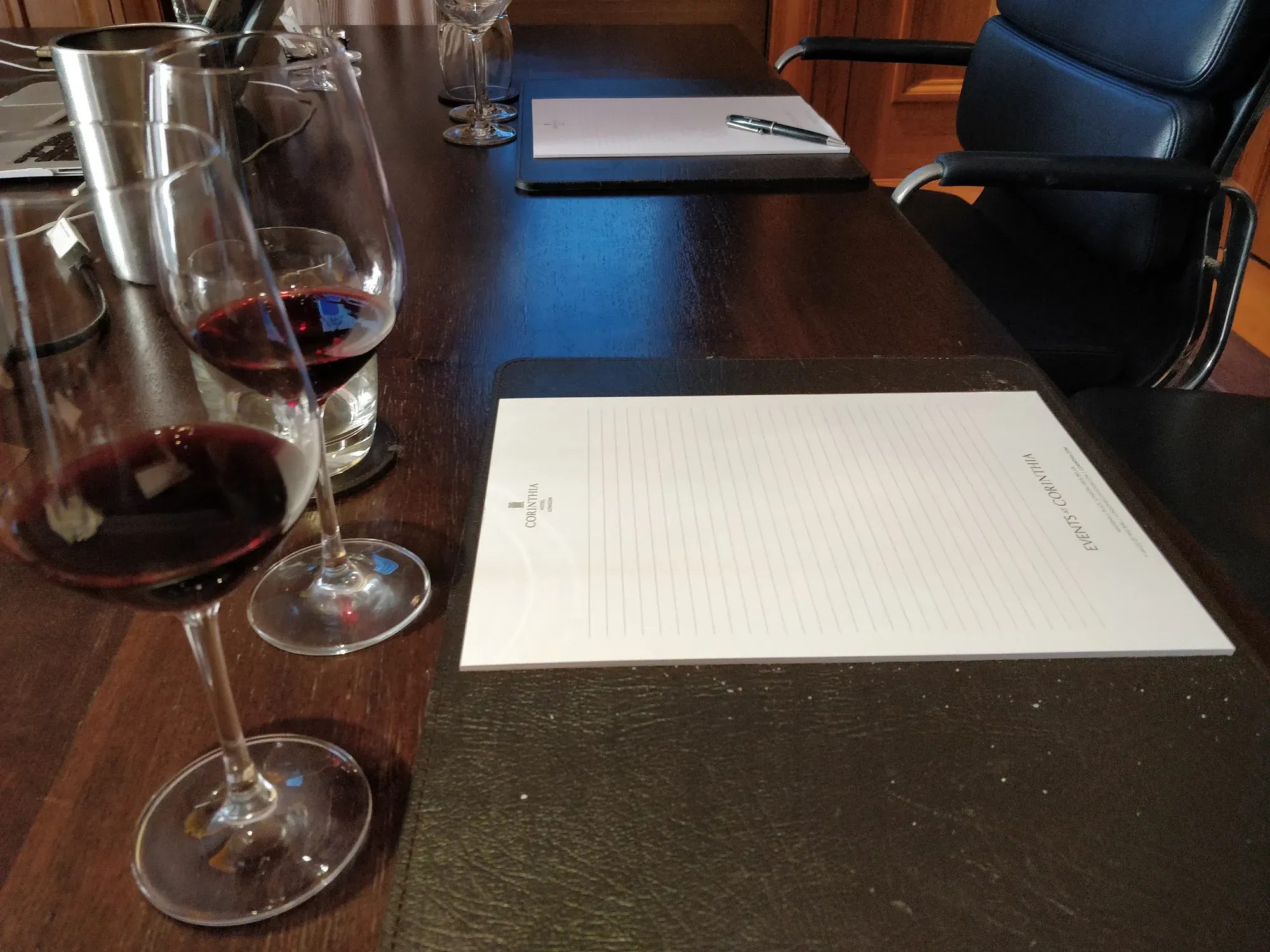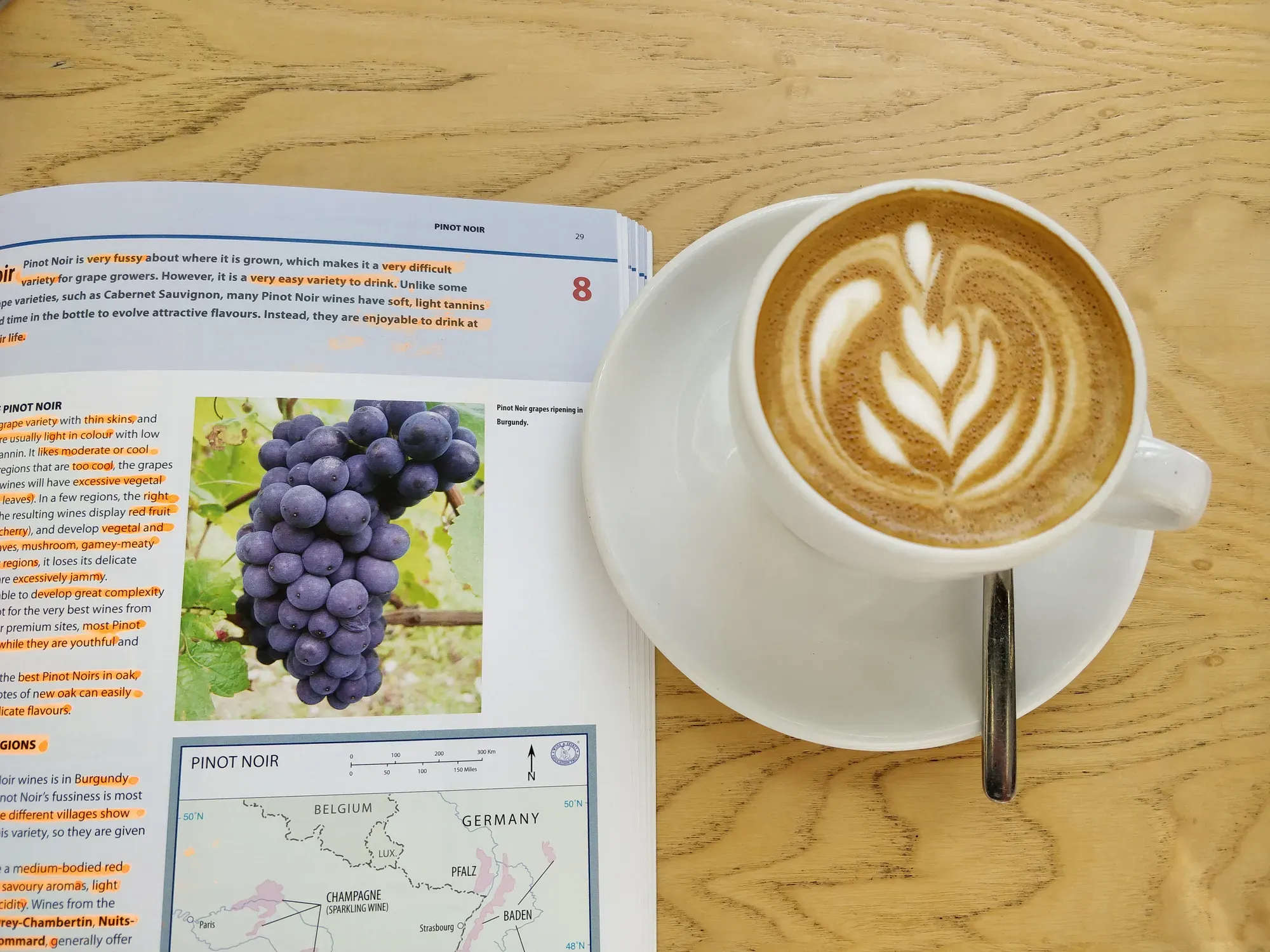
Drinking is Thinking: Understanding Wine with a WSET Qualification
Making UnscrewMe better👍🏻 by learning more about tastes and techniques💡 with the WSET Level 2 Award in Wines and Spirits qualification🎓.
My general interest in wines goes back a long time and ultimately fuelled my drive to build UnscrewMe.
For a couple of years now I had been thinking about learning more about wine, in a more structured way. My first contact with more in-depth wine education — which actually was a lot of fun — was at a monthly “Wine Club” at an excellent local pub in Maida Vale, The Truscott Arms, that unfortunately has closed down since. The Wine Club quickly became a staple in my calendar and over time, I dragged a few friends along to join me.
Developing a thirst for deeper knowledge
Every time I went to the Wine Club, I learned something new. One time I would discover new characteristics in a kind of wine I already knew, other times I would try something I had never heard of before. This is where I met wine educator Raul Diaz. Besides offering wine courses for qualifications by the Wine & Spirit Education Trust (WSET), he was also running that Wine Club, and his engaging and entertaining style made understanding wine better a real joy — the more joyful, the more wine we had tasted, naturally.
Even though that Wine Club is no more, I continued to go to other wine tastings, developed a better sensitivity to certain tastes and characteristics. But my knowledge was still somewhat superficial and not systematic.
Then recently, while I was already busy working on UnscrewMe, I went to another tasting at the WSET School London near London Bridge, where Raul was running an evening tasting about the German VDP classification system. I did already know the system, but I was interested in the wine selection. After the tasting, I had a little chat with Raul and spontaneously decided to finally sign up for one of his wine classes — a two-day weekend course in July.
It just made sense to me to learn more, now that I was about to launch UnscrewMe. Not only would it help me better understand the tasting descriptions I read, it might also help me developing the business when talking to wine bars and shops in the future.
Deciding to learn more about wine
So, with some basic knowledge and a thirst for more 🍷, I signed up for the WSET Level 2 Award in Wines and Spirits. This is where many people begin to learn about wine in a more structured fashion:
A beginner to intermediate level qualification exploring wines and spirits for those working in the industry or wine and spirit enthusiasts.
Raul’s company Wine Training (@WineTraining) is an Approved Programme Provider for the WSET. Immediately after I had confirmed my booking, Raul gave me the study materials. As a result, I had about a week to look through them, before the course started.
Since I signed up so spontaneously, I couldn’t do the exam on the same weekend, but only a month later. Which turned out to be not so bad, since it gave me a lot more time to revise and learn for the exam.
I started going through the book in my lunch break and then used my UnscrewMe working days to go through the bulk of the chapters with my highlighters over two days.
Tasting the differences

What I liked most about the course at first was probably the compact format — just two days, one weekend. The location Raul has secured for his courses is absolutely stunning: the Corinthia Hotel London just off Trafalgar Square. We met in the lobby and then went up to the meeting room, where we would spend about 16 hours over the next two days.
The service was impeccable, the room was set up with plenty of water and a couple of spittoons. In the breaks, hotel staff would empty the spittoons and fill up the water jugs if necessary.
Before, I always refused to spit wine out, since to me it is a waste of the beautiful juice. However, doing a professional qualification is different than an evening tasting, and sensibly, Raul made it clear that we should always spit the wine out — we were there to learn and taste, not to get wasted on samples. Even though spitting wine out still made me a little bit sad every time, I agree that to learn effectively in a short amount of time, spitting is essential. On the second day, I was actually happy to spit the wine out, as we started with some bold red at ten o’clock in the morning.
In the week when I worked my way through the book and even more over the course of the weekend, I developed a more structured understanding of wines. Especially perhaps, I gained a much better overview of the various wine regions and the specific quality levels in different countries and regions. Of course, if you are going to work in the hospitality or wine industry, those details are important. For me, it’s mostly just nice to know.
The course is structured in almost 20 chapters, with most of them focusing on specific grape varieties, split up into the most important wine regions for those varieties. A large part of the course, or the WSET in general in my opinion, is to create a shared vocabulary, which makes it easier to talk about wine.
In my course, we were around six people, so it was a nice and small group, where everyone could ask questions. And answer questions.
Interaction between all participants is key to Raul’s courses. By asking pointed questions and only accepting precise, short answers, he sharpened our minds in preparation for the exam. This can be a little bit annoying at times, when you want to know more and just get a generic answer.
Every now and then he did go into more detail and talked about topics that went beyond what is relevant for the Level 2 exam, but he always made very clear what the expected answer is for the Level 2 qualification. The way he asked the questions helped me focus my attention on what is important to pass the Level 2 exam, even in cases where we all knew that the answers might be oversimplifications.
The exam consists of 50 multiple-choice questions. Taking this into account, it makes sense to train everyone taking the course to be able to tick the right boxes without much thinking, almost like a reflex. And I believe that this is exactly what he tries to achieve. Overthinking can become an issue in the exam, an effect that can be minimised by conditioning quick responses triggered by specific keywords that are part of the syllabus.
Revisiting my notes

As I booked the course just one week in advance, I could not take the exam the following weekend. While the downside of doing the exam a month later clearly is that the course isn’t as fresh any more, at the same time, it would give me a month to revise my notes — if I would be disciplined enough to look at them again before the exam.
I did not look at the course material for a couple of weeks, but I did put appointments in my calendar when I wanted to start preparing for the exam.
Since I was genuinely interested and wanted to remember all the new wine knowledge, I did go through my notes repeatedly and wrote up summaries based on my raw notes. And I did then use the summaries to go through all the chapters more quickly. I also wrote up grape profiles based on the book and our tasting notes.
In parallel, I also paced through the book again, mainly focusing on the text I had highlighted when I read through it for the first time. I highlighted everything general and regarding white wine in yellow, and everything concerning red wine in orange. So I could immediately see, if something was about red or white wines.
In addition to Raul’s helpful comments designed to make it easier to remember certain characteristics of particular grape varieties, I also came up with a few additional associations which made it easier for me to remember some differences. Two examples are how I can now remember what grapes are used for Sancerre and Chablis wines, and what the difference is between the similarly named areas Pouilly-Fumé and Pouilly-Fuissé in France. It’s so obvious to me now:
- Chablis is made from Chardonnay, Sancerre is made from Sauvignon Blanc. And both taste somewhat similar.
- “Fumé Blanc” is an alternative name Americans invented for oaky Sauvignon Blanc wines, they chose “Fumé” because of the highly-regarded French appellation Pouilly-Fumé which also uses Sauvignon Blanc grapes and is in the Loire Valley wine region, just opposite Sancerre. In contrast to this, the Pouilly-Fuissé appellation uses Chardonnay grapes and is located in Mâconnais in the south of the Burgundy wine region.
In many ways, reading through books and notes felt a it like being in school or university again. Just, it was much more fun, since I just did the WSET Level 2 out of interest, because I wanted to learn more about wines, not because I actually needed the qualification.
An additional benefit of studying wine for me is, that I can now always justify to order another and another glass of wine for educational purposes! 🍾🍷
Structuring my insights
Following my GitLab approach to documentation of everything around UnscrewMe, I’ve put my raw notes and my additional summaries into a Git repository. All documents started on Google Keep as text documents, but I used Markdown formatting, so once I committed and pushed the files to GitLab, they could be viewed online with nice markup for headings and lists.
One of the reasons for managing my notes that way was that I could easily print them to PDF in a browser, and then flexibly just take the PDFs with me anywhere. So, while I was on holiday, drinking my way through Varna, the major city along the Black Sea coast in Bulgaria, I could continue to study my notes and prepare for the exam.
Checking all the right boxes
In the days before the exam, I did go through my summaries again and again, and in the end, I felt well-prepared for the task.
The exam itself included some tricky questions which were harder than I expected, but overall it was doable with the knowledge from the course. Listening closely to little clues throughout the course helped in answering some questions instantly without much thinking required.
After the exam, together with a couple of others, we took some of the left-over bottles from the course, and sat in a park to wind down and enjoy a sunny Sunday evening. It was a great way to end the course, and we later migrated over to an Italian wine bar in Covent Garden. At the end of the evening, I was pretty happy that I was off on Monday — I just had to catch a train to Edinburgh for another holiday.
After the exam, I had to wait for about two weeks, until I got the notification, that I passed the WSET Level 2 Award in Wines and Spirits with Distinction. Immediately after the exam, I wasn’t convinced I would pass the 85% mark required for the distinction, but it looks like all the work of revising my notes paid off.
Continuing the journey
No professional qualification comes cheap. I saw it as an investment in myself, and in my idea, UnscrewMe. I met a number of interesting people from different backgrounds. And I learned a lot about wine.
It is impressive, how much more I now understand when I read through a wine list at a restaurant. Having this background knowledge makes it easier to choose interesting wines, and that in turn makes drinking wine more fun.
As next step, I’ve already started reading the text book for WSET Level 3 Award in Wines and Spirits. I have not decided yet whether I will take the course and the exam, but I definitely want to continue increasing my knowledge about wine.
If everything goes to plan over the coming two, three weeks, the next article will connect to the earlier article about user testing and highlight some of the changes we have made to complete our basic Minimum Viable Product.
(This article has been a while in the making, so naturally, plenty of wine went into it. One highlight was an Italian Chardonnay, the 2017 Bianco Famiglia Fraquelli from the Lombardy region in the very north of Italy🇮🇹 at La Brasseria in Marylebone – it tasted very much like a Chablis! Starting my week in Edinburgh, I very much enjoyed a beautiful 2013 Riesling from winemaker Domänenweingut Schloss Schönborn in the Rheingau region in Germany🇩🇪 at The Hounours. At 28° – 50° Marylebone Lane, I treated myself to a little tasting, starting with an exciting 2015 Pinot Gris & Furmint blend from Dveri-Pax Wine Cellar located in the Podravje region within the Štajerska district in Slovenia🇸🇮. It was a funny wine where both Pinot Gris and Furmint clearly came through, not perfectly balanced, but interesting. My second one was a 2016 Monfarina by the winemaker Domaine Giachino from the Savoie region in the French Alps🇫🇷 made from Jacquère grapes. I did not find the nose very attractive, but on. the palate it was a refreshing combination of fruit and minerals. Finally, the sommelier gave me a tiny taster of the 2015 Rheinschiefer Hallgarten Riesling VDP.ORTSWEIN from Weingut Peter Jakob Kühn in the Rheingau region in Germany🇩🇪. An excellent Riesling offering big flavours. And since the WSET Level 2 Awards in Wines and Spirits also covers gin, I guess I should also mention one of my favourite small batch distilleries, Graveney Gin from Tooting🇬🇧. Their handcrafted gin shows nice notes of pink grapefruit, and makes a great gin and tonic.)
Please Share!
First published in
August 2018.
Also available at https://medium.com/unscrewme/drinking-is-thinking-understanding-wine-with-a-wset-qualification-b099e36bd1ea